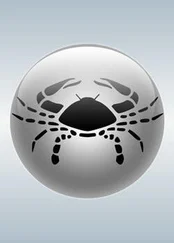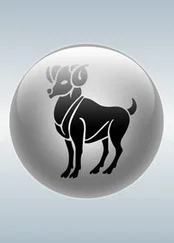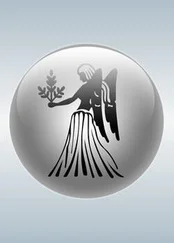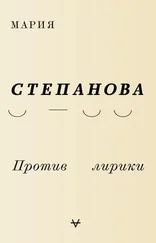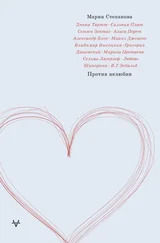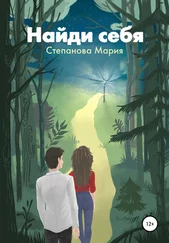It’s surprising that the focus of the picture falls not on the predator, the King of Beasts, but on the harmless ruminant. A bull with the powerful brow of a thinker stands dead center, aligned with the tree of knowledge, which divides the picture into two equal parts, and the furnace mouth of the fire. His expression of tortured reflection makes him look a little like the sinner in Michelangelo’s “The Last Judgment,” mouth opened in incomprehension, furrowed face. But here the creature is without original sin and it has a choice: the bull is free to decide whether or not it becomes a human.
In the dark days of 1937 the German-Jewish art historian Erwin Panofsky described Piero di Cosimo’s pictures as the “emotional atavisms” of a “primitive who happened to live in a period of sophisticated civilization.” Rather than a civilized sense of nostalgia, Piero is in the grip of a desperate longing for the disappeared past. In my view this interpretation stems from the age-old desire to see the artist as “other,” as a transported creature, an Indigenous person at the Exposition Universelle in Paris, a Martian on a foreign planet. It might be worth arguing but he is right in one important way: the state of mind he describes is also a sort of metamorphosis, the result of a terrible disaster that has thrown the world out of joint.
In “The Forest Fire” we see the moment of exposure, the flash, when light burns out the image and replaces it with the blinding white of nonexistence. The point at which everything shifts into its final shape is beyond memory and impossible to convey. It’s the moment we first open our eyes.
Piero di Cosimo’s picture is for me a close equivalent of Courbet’s “L’origine du monde” — its exact rhythm, even the way it shocks and spellbinds, is the same. This equivalence is due in part to the directness of the message, the documentary scale of the narrative of the formation of the universe, how it casts off new detail, forcing life to roll ever onward down the eternally angled slope. Is catastrophe then simply the starting point of genesis? The kiln for firing small clay figures? The crucible for transmutation? This is how creation happens in a post-Promethean world, and this is how the fall from heaven must have looked in an age of aerial warfare and chemical weapons — the flaming sword of the forest fire, and partridges swooping in the skies, triangular as jet fighters.
*
In one of the exercise books where my mother wrote down all my childish phrases and conversations, right at the top of a lined page filled with notes about summer and dandelions and cows, she has written: My mother died today. And we didn’t know.
I remember that day well. I can see in my mind’s eye the morning light in an unfamiliar building; a huge dog coming out from under the table, which was too high for me; the strange window frames; and then later that day, a vast stretch of water, as far as the edge of the world, and bobbing and flickering in it, my mother’s head, for my mother had decided to swim out into this waste of water, and had near vanished. I was certain she was gone — a new and strange life had just begun and I was completely alone. I didn’t even cry, I stood on the bank of the river Oka, where it meets the Volga, and there was no one to hear me. When the adults swam back, laughing, something had changed irrevocably.
I don’t really think life can begin with a catastrophe, especially not one that happened a long time before us. Misfortune , sweeping low and fierce overhead like an Orthodox banner, crackling with burning twigs and tongues of white flame — maybe it’s simply a condition of our existence, the maternal womb from which we emerge screaming with pain. Maybe it isn’t even worthy of the name Misfortune. When we got home that August and went out to our dacha, grandmother’s bouquets of dried flowers decorated the walls, and her bag still held her purse and season ticket; it smelt of phlox; and our life was already arranged for years to come, like a song with a repeating refrain. Grandmother Lyolya was only fifty-eight, she died of a heart attack before we could come home to her. And now my mother’s life had been given its shape, its model for imitation. If up till then she had just been wandering along, following her heart, now she had an impossible standard to meet. She never spoke it aloud, but she seemed to want to become someone different, for herself, for us: she wanted to become Lyolya, with her easy hospitality, her radiating joy, her cakes and hugs. She couldn’t do it, no one could.
The story of our home, as I heard it, began not a hundred years ago, but in August 1974. Grandmother reluctantly let my mother and me go off on holiday, away from summer at the dacha with its curtains, patterned with red and green apples. When we returned it was to an empty house, and we were alone. My mother blamed herself, and I sat by her. I remembered the terrifying story of the little girl who was slow to bring water to her sick mother and by the time she got to her mother, it was too late. Birds flew overhead, and one of them was her mother, and it sang: too late too late I won’t come back . Somehow this story seemed to be about us, although no one had precisely said this. I just knew it, and I wept over the untouched water like an accomplice.
All my later knowledge was in light of this story: my mother spoke, and I fearfully tried to remember everything although I still forgot. I ran away, like the child in the story, to play, to grow up and live a little. I think that must be how she felt too, a young woman, younger than I am now, with her exercise book of recipes written out in pencil, and her dependents: a two-year-old daughter and two old people who no longer recognized themselves or each other. Later she began wearing Sarra’s wedding ring; on the inside it had the name Misha, which was my father’s name as well. Nothing ever comes to an end.
Squares of glinting photographic paper floated in ribbed trays in the red light of the bathroom, which served as my father’s darkroom. I was allowed to watch as shapes appeared: the complete blankness was suddenly roiled with lines and angles and they slowly became a coherent whole. I loved the contact sheets best of all, covered in miniature images that could potentially be enlarged to any size, just like me at that age. The tiny portraits of my parents fitted in my pocket and made the evenings spent at nursery school more bearable. I remember my parents realizing I’d torn the picture of my father out of his passport so I could keep it with me.
My own first camera was a little plastic Soviet 35mm, a Smena-8, with dials to change the aperture and shutter speed. I was given it as a present when I was ten, and I immediately set about saving and preserving: the graying pines, the sleepers at the railway halt, someone my parents knew, water running over the stones — all industriously rescued from oblivion. The images, lifted from the fixing tray with tongs, dried on a line, but didn’t regain their former vitality. I soon gave it up, but I didn’t learn my lesson.
This book is coming to an end. Everything I wasn’t able to save is scattering in all directions, like the dumpy birds in “The Forest Fire.” I have no one to tell that Abram Ginzburg’s wife was called Rosa, I’ll never write about Sarra’s joke, in the middle of the war, that mold was good because it produced penicillin. Or how grandfather Lyonya demanded that Solzhenitsyn’s dissident masterpiece The Gulag Archipelago (despite strenuous efforts to get hold of it) be removed from the apartment after only one night as it would “kill us all.” Not even how all the women in the Moscow communal apartment would gather in the kitchen with tubs and towels to chatter through the weekly ritual of a pedicure. Or even that a squirrel lived on the balcony of a Moscow apartment seventy years ago. The squirrel had a wheel and it would run round and round, watched by a little girl.
Читать дальше



